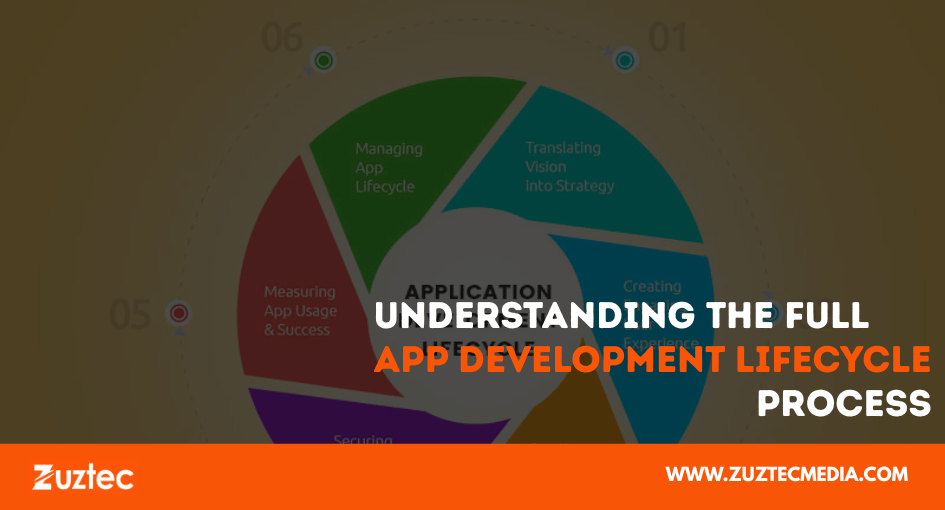
Understanding The Full App Development Lifecycle Process
In today’s digital-first world, mobile and web apps play a central role in how businesses operate and interact with their users. Whether it’s ordering food, booking a ride, managing finances, or shopping online, apps are shaping our daily lives. But behind every user-friendly interface and smooth functionality is a detailed and structured process that brings these applications to life—the app development lifecycle.
The application development lifecycle is not just about writing code or choosing the right platform. It encompasses a series of well-defined phases that guide an app from the initial idea to final release and beyond. Understanding this lifecycle is essential for business owners, developers, and project managers alike, as it ensures each step is completed with purpose and precision.
The process begins with identifying a problem or need and ends with regular updates and maintenance after the app is launched. Each stage builds on the previous one, helping to avoid costly mistakes and misalignments. Whether you’re developing a simple productivity app or a complex e-commerce solution, following the right lifecycle structure helps keep your project on track, on time, and within budget.
This article explores every key phase of the application development lifecycle, outlining the goals, tasks, and decisions involved in each. From planning to design, development, testing, and post-launch support, we’ll take a closer look at how successful apps are built from the ground up.
Key Phases Of The App Development Lifecycle
The application development lifecycle refers to the structured approach followed during the creation of an application. It consists of several core stages: planning, design, development, testing, deployment, and maintenance. Each of these phases is crucial and directly influences the success of the final product.
The planning stage is where everything starts. It involves gathering requirements, identifying the target audience, analyzing competitors, and setting clear objectives. A detailed project plan is created, defining timelines, resources, and expected deliverables.
Next comes the design phase. Here, user interface (UI) and user experience (UX) designers begin creating wireframes, mockups, and prototypes. This stage focuses on making the app easy to use and visually appealing. Good design enhances user engagement and retention.
Developers write the front-end and back-end code, integrate APIs, and ensure the app works across devices. Agile methodologies are often used to deliver features in sprints and allow for frequent feedback.
Testing is a critical part of the application development lifecycle. It ensures the app is free of bugs, performs well, and delivers the expected user experience. Multiple types of testing are performed, including functional, performance, and security testing.
Once the app is fully tested and approved, it’s deployed to app stores or web servers. After launch, maintenance begins. This includes fixing bugs, releasing updates, and adding new features to improve performance and meet user needs.
Post-Launch Maintenance And Updates
Once an app goes live, the job isn’t done. Maintenance is a key part of the lifecycle that ensures your app remains relevant, functional, and secure over time. After launch, developers must monitor performance, track bugs, and gather usage data to make informed improvements.
One of the biggest advantages of following a complete app development lifecycle is the ability to respond quickly to real-time issues. If users report a glitch or a feature isn’t performing well, updates can be deployed efficiently because the development process was well-documented and structured.
Regular updates are also necessary to support new operating system versions, hardware changes, and third-party service updates. Ignoring maintenance can lead to broken features and unhappy users.
Security patches are another vital reason for post-launch maintenance. As cyber threats evolve, apps need regular updates to stay protected. This is especially important for apps handling sensitive data like financial or health-related information.
Conclusion: Building Successful Apps With A Structured Approach
The journey of building an app doesn’t stop with a good idea. It requires a structured plan and attention to every detail across the application development lifecycle.
Throughout the lifecycle, strategic thinking and teamwork ensure that the app is functional, user-friendly, and scalable. Developers who follow a proper structure reduce the chances of failure and improve the chances of user satisfaction and long-term app success.
Understanding the app development lifecycle allows businesses to align their resources, timelines, and goals more effectively. It also ensures the final product meets user expectations, stays competitive in the market, and evolves smoothly over time.
As technology advances and user demands grow, having a solid development process will become even more crucial. By committing to each stage of the lifecycle, teams can build apps that not only function well but also stand the test of time.

